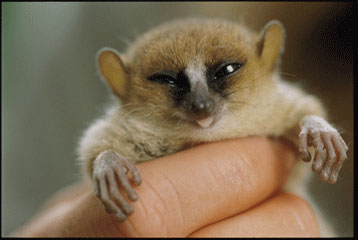
"Heeeeey ladiiiiiies!!!!!" That is what this guy is saying.
They can grow to just under six feet long. They live in China, Japan, and ahhhhhhhhh--what's this???--the eastern United States. Wow. So close, but yet so far. Thank God there is an extensive system of great lakes and rivers throughout this country so that giant salamanders can get wherever the hell they want and take up residence in our brooks and ponds, where they will set up giant underwater Club Meds for their brethren in giantness, giant otters and giant turtles. Maybe giant rabbits, too, but I guess they'd probably have to be outfitted with scuba gear, and frankly I don't really know how much giant rabbits would be into that.
These are the biggest known amphibians living in the world today (like how I left that window open just in case they find a bigger one, say, living in the New Jersey sewers or something? That's professionalism.) They can live up to fifty years in captivity, which I figure is long enough to teach one how to talk. Check out this charming family anecdote, once again from Wikipedia:
The male fertilises the eggs externally by releasing his sperm onto them, and will then guard them for at least three months, until they hatch. At this point, the larvae will live off their noticeable stored fat until ready to hunt. Once ready they will hunt as a group rather than individually.Just imagine, oversized, pudgy gangs of these things, patrolling our waterways! Hunting together, and then later bro-ing down for a round of underwater flag football! That's what giant, freaky underwater family is all about.


I love how people always pick up giant animals like that. It's like, "Just me 'n' my buddy, Rod the Giant Salamander, hangin' out before the big game!"









